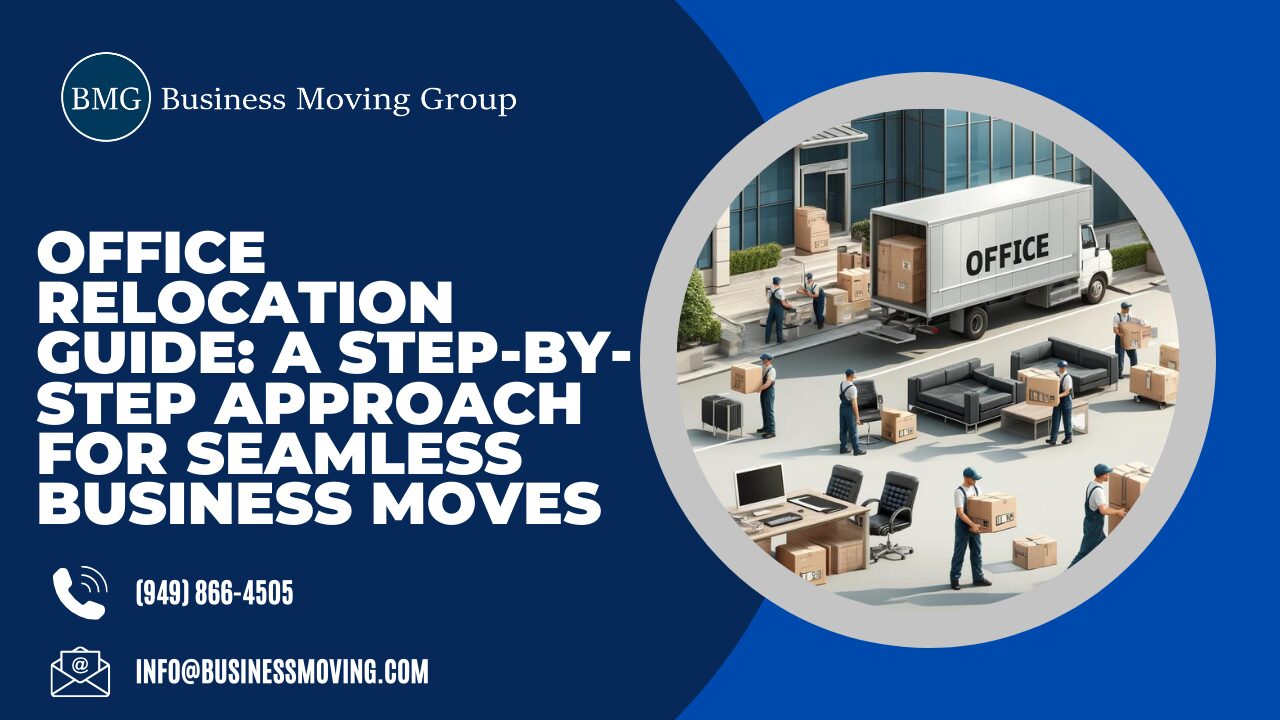Office Relocation Guide: A Step-by-Step Approach for Seamless Business Moves
By the Business Moving Group Team – Experts in Commercial Relocation and Logistics
At Business Moving Group, we specialize in helping companies execute seamless office relocations with minimal disruption. Whether you’re moving to scale operations, cut costs, or reposition your company geographically, a well-planned move ensures business continuity and employee satisfaction. This guide outlines the critical steps for a successful business relocation from start to finish.
1. Initial Planning
Assess Your Needs:
Define your objectives—are you relocating for growth, cost savings, access to talent, or convenience?
Set Budget & Timeline:
Outline a realistic moving budget and build a project timeline. Include buffer time for unexpected changes.
Delegate Tasks:
Form a move committee or assign a project lead to manage logistics, internal communication, and timelines.
2. Finding the Right Office Movers
Research Reputable Providers:
Look for companies like Business Moving Group that specialize in office moves, not just residential ones.
Compare Detailed Quotes:
Get written estimates from multiple movers. Evaluate them based on scope of services—not just price.
Verify Insurance Coverage:
Ensure your mover carries general liability, workers’ comp, and cargo insurance to protect your assets.
📊 Fact: According to IFMA, poor planning and unqualified movers are leading causes of relocation failure.
3. Strategic Packing and Labeling
Organize by Department:
Pack by team or department to make unpacking more efficient at the new site.
Label Thoroughly:
Use color-coded labels and include floor/room numbers. Create a centralized inventory for tracking.
4. Communication and Coordination
Keep Employees Informed:
Share the move timeline, what’s expected of them, and what changes to anticipate.
Coordinate with Stakeholders:
Notify building management, utility providers, IT vendors, and delivery services ahead of time.
5. Moving Day Execution
Follow the Master Plan:
Ensure all involved teams—including movers—have a shared schedule and escalation contacts.
Oversee Logistics:
Assign floor captains to supervise loading and unloading. Walk the space before final sign-off.
6. Settling into the New Space
Strategic Layout Setup:
Use your new office floor plan to guide equipment and furniture placement. Prioritize high-traffic zones.
Test Key Systems:
Check that phones, Wi-Fi, servers, and access control systems are functioning as expected.
7. Employee Support and Engagement
Address Concerns Promptly:
Offer an internal help desk or contact point for move-related issues.
Provide Orientation Sessions:
Walk your team through the new space—highlight emergency exits, amenities, and desk assignments.
Gather Feedback:
Use quick surveys or team check-ins to identify friction points and adjustment needs.
8. Post-Move Assessment and Improvement
Review the Move Process:
Document what went well and what didn’t for future reference.
Incorporate Feedback:
Leverage input from employees and vendors to optimize the next phase or future relocations.
9. Cost Management and Budget Adherence
Track Expenses:
Monitor all spending categories, from packing materials to tech setup costs.
Build a Contingency Plan:
Allocate a 10–15% buffer for unexpected costs such as extended lease terms or extra labor.
10. Technology Integration and System Setup
Partner with IT Early:
Work with your internal team or an MSP to plan for wiring, connectivity, and device setup.
Minimize Downtime:
Move critical systems in phases or after business hours to keep workflows active.
Test Everything:
Run full checks on email, phone lines, servers, and printers before going live.
11. Legal Compliance and Documentation
Lease Agreements & Permits:
Ensure your contracts, insurance, and occupancy permits are updated and aligned with local regulations.
Maintain Move Records:
Keep digital and physical documentation for liability, taxes, and future audits.
12. Sustainability and Eco-Friendly Practices
Reduce Waste:
Recycle boxes, bubble wrap, and donate unwanted furniture or equipment.
Upgrade to Energy Efficiency:
Switch to LED lighting, smart thermostats, and other energy-efficient systems in the new office.
Encourage Green Habits:
Set up recycling stations and educate your team about the building’s green policies.
Conclusion
A successful office relocation requires more than just trucks and boxes—it demands strategic coordination, detailed planning, and the right partners. With the help of experts like Business Moving Group, your company can transition smoothly into a new space without sacrificing productivity or employee engagement.
Ready to Simplify Your Business Move?
Contact Business Moving Group today for a free consultation!
Visit us at Business Moving Group for helpful resources and to learn more about our services.

